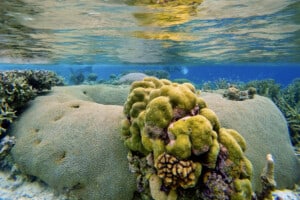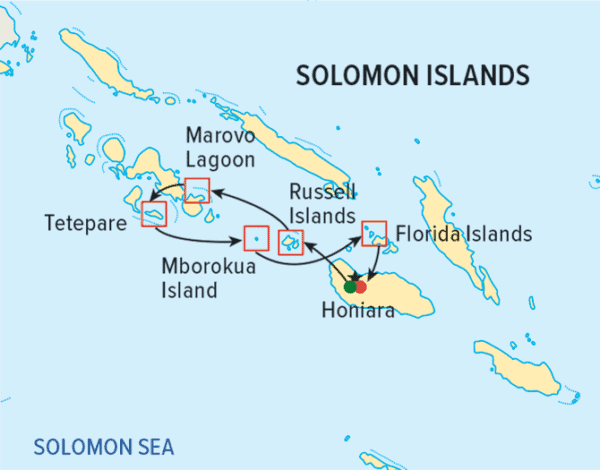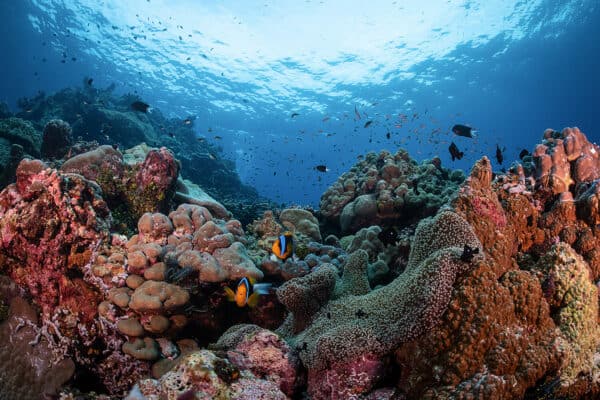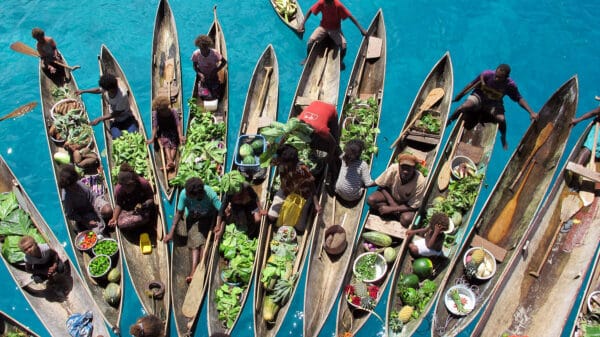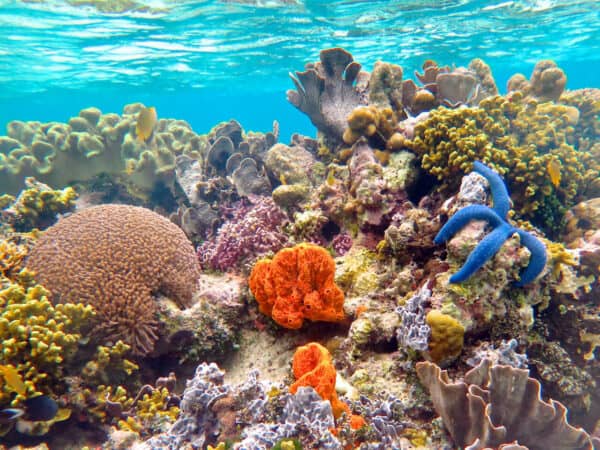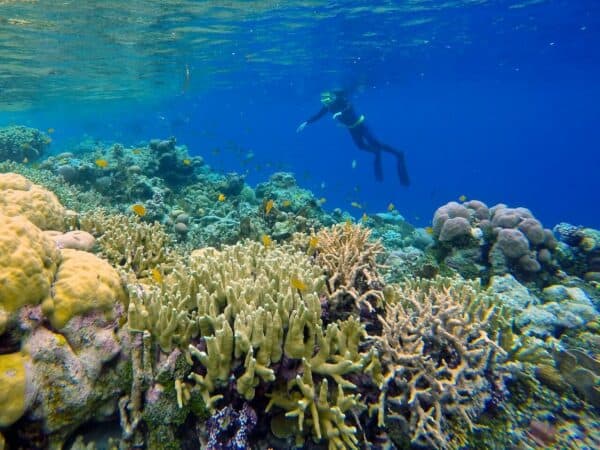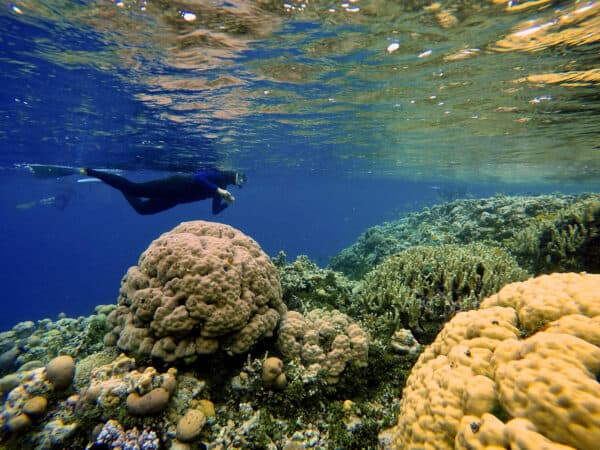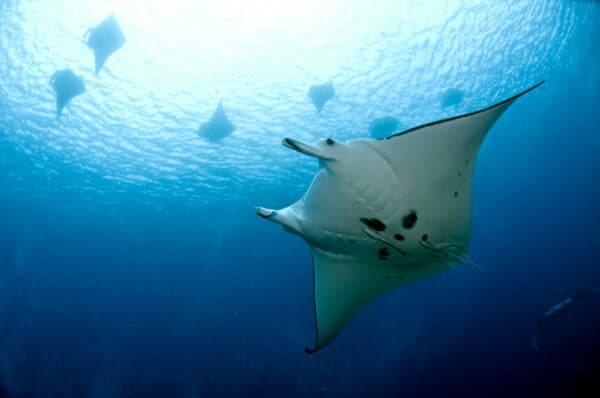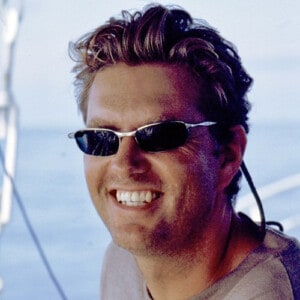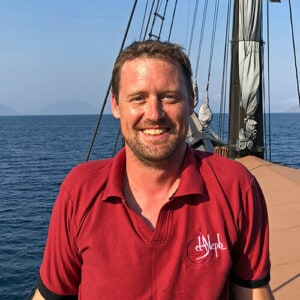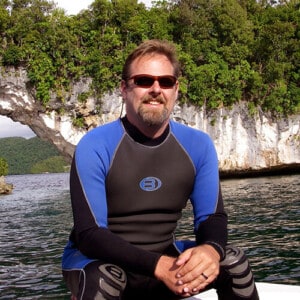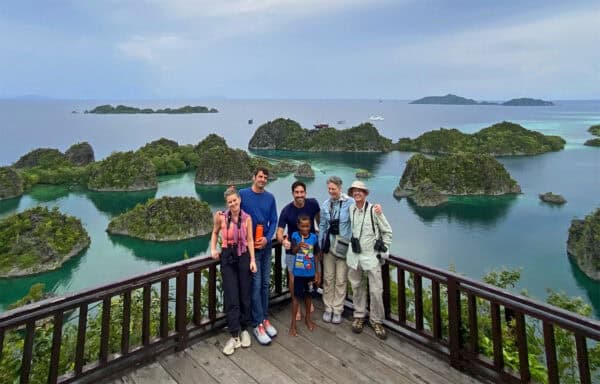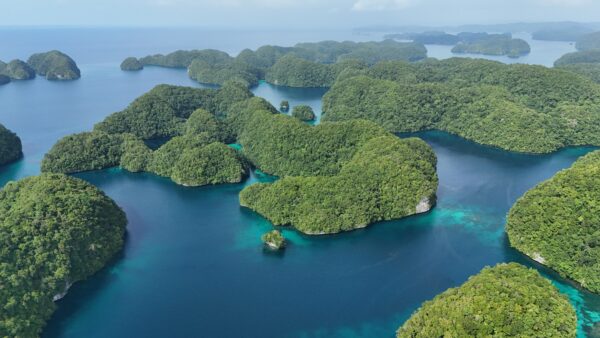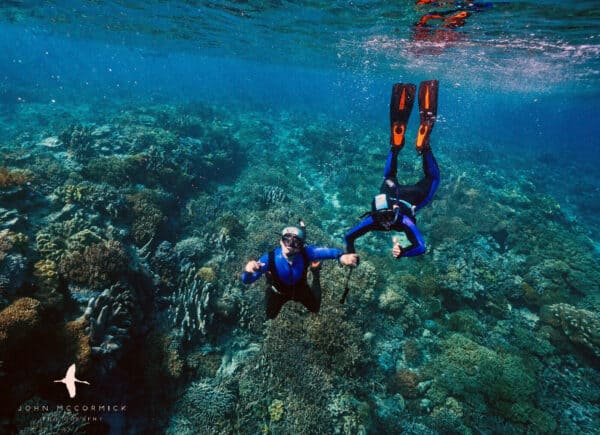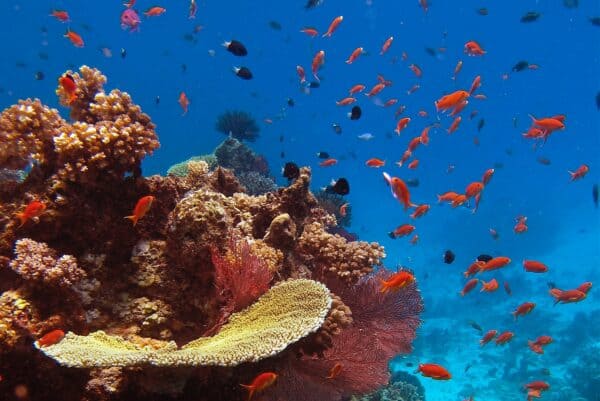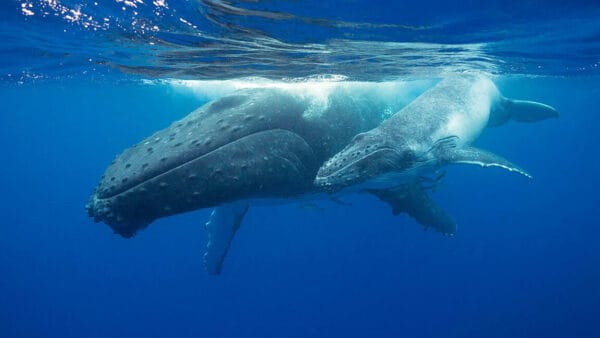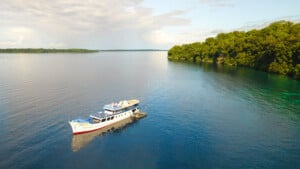About This Trip
- Snorkel pristine shallow reefs of hard and soft corals, including a location with the second highest reef fish biodiversity in the world (after Raja Ampat, Indonesia).
- Our Solomon Islands liveaboard expedition supports whale and dolphin survey efforts, and we may see the little-known Omura's whale, first discovered in 2004.
- Visit ultra-remote parts of the Solomon Islands including Tetepare – the largest uninhabited island in the South Pacific – and Marovo Lagoon, the world’s largest enclosed reef lagoon.
Join us as we explore this unique jewel of the South Pacific, guided by naturalists and a cetacean expert with years of experience in the region. You’ll get to enjoy two to three snorkeling excursions a day, complemented by intriguing cultural experiences, and jungle hikes on uninhabited islands. We will spend long sessions each day exploring the stupendous coral reefs—some of the most under-appreciated and unique in the entire Pacific. High fish and invertebrate variation allow for diverse wildlife sightings including nudibranchs, pipefish, mantis shrimp, rays, sea turtles, and sharks.
During transits between snorkeling we will look for cetaceans, guided by our on board expert. Many tropical cetacean species are present here including shortfin pilot whales, pygmy killer whales, sperm whales, dwarf sperm whales, and many dolphin species. In past years we have also seen beaked whales. In particular, we'll be on the lookout for blue whales, which may use these waters as a mating and/or breeding ground, as well as Omura’s whale, a tropical baleen whale species unknown to science before 2004 (and first described from the Solomon Islands). If deemed appropriate, you may also have the chance to snorkel with whales — an unforgettable experience.
Beyond our focus on nature, our itinerary allows for occasional stops to visit the islands and isolated local villages along our route, an enriching cultural experience. This special itinerary was created in collaboration with Planet Deep.
Read our trip leaders' reports from past Solomon Islands liveaboard trips:
- Exploring Remote Corners of the Coral Triangle with Planet Deep
- An Unexplored Corner of the Coral Triangle: The Solomon Islands
- Solomon Islands by Liveaboard: Whale Survey Report
Notes on Trip Costs
Trip prices do not include airfare. Extra hotel nights pre and post trip are not included. Special deposit amounts and payment dates are in effect for this expedition ($2,000/person deposit upon registration; $2,000/person second deposit due by Jan 2024; final balance due by Oct 2024). Limited single accommodations are available by request only, but we are happy to pair solo travelers with a roommate. This expedition has special terms and conditions.
click to expand
Conservation Impact
Founded in 1969, Oceanic Society is America’s oldest nonprofit organization dedicated to ocean conservation. As pioneers of “eco travel,” our expeditions directly support our mission. They not only positively impact our travelers, but also the people, places, and wildlife we go to see, and Oceanic Society's earnings are invested back into our global ocean conservation programs. In addition, for every booking, we fund the removal of 200 lbs of trash from the marine environment through our Traveler Plastic Pollution Offset Program.
Dates & Prices
Itinerary
Our custom Solomon Islands liveaboard itinerary reduces open water travel time and focuses on the best snorkeling locations that the location has to offer. Highlights include colorful soft coral walls, abundant schooling reef fish, and productive reef ecosystems that are very snorkel accessible and perfectly suited to our group. The guides may change the snorkeling site sequence or selection due to local sea and weather conditions or wildlife sightings.
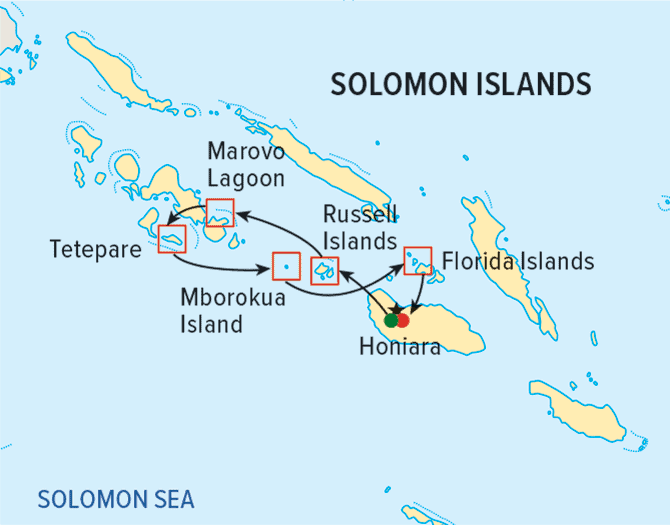
Apr 24 or earlier: Arrive in Honiara
Arrive in Honiara, Solomon Islands.
Apr 24: Embark in Honiara
Board the ship in the afternoon for a trip briefing, before meeting your new shipmates at the festive welcome dinner. During transits, you will search for whales, dolphins, and seabirds, and if you want to participate in cetacean surveys, you’ll learn about our Rapid Ecological Assessment survey techniques.
Apr 25–27: The Russell Islands
The Russell Islands are made up of two scenic volcanic islands, Pavuvu and Mbanika, with rugged terrain and amazing beaches. Their numerous deep, sheltered bays are perfect for coral reef growth and offer exceptional snorkeling. Explore a variety of fascinating seaward reef environments, including sloping coral gardens and barrier reefs. Various whales and dolphins inhabit these waters, including a resident pod of short-finned pilot whales. It is a perfect start to your exploration of the remote waters of the Solomon Islands. Between snorkels, you can help survey for whales as you travel to new snorkel sites. If you want to participate in the cetacean surveys you’ll learn to use our Rapid Ecological Assessment survey techniques.
Apr 28-29: Marovo - Mbili to Wickham
Marovo Lagoon is the world’s largest enclosed reef lagoon and earns its World Heritage status from its mix of biologically and culturally significant wonders. Its turquoise-blue waters are dotted with hundreds of small islands fringed with sandy beaches and covered by coconut palms and rainforest, making it an idyllic and pristine tropical paradise. Spend an exhilarating two full days snorkeling and exploring this extraordinary lagoon.
Cetaceans are frequently sighted in Marovo’s waters including resident spinner, spotted, and bottlenose dolphins, pilot whales (in the deeper passages of the lagoon), and occasionally orca and dugong. The abundant and generally docile reef sharks of Marovo carry a special place in local culture, considered to be a key species in the ecosystem, and sometimes as guardian spirits.
Visit local communities on the inhabited islands to see the exquisite woodcarvings made by local woodcarvers; if you are lucky, watch one of the expert carvers at work honing his craft. See day-to-day village life for the subsistence fishermen who inhabit these islands; a special experience not to be missed.
Apr 30 - May 1: Tetepare
Navigating down the Blanche Channel and the west coast of New Georgia Island, you’ll sail to the jewel-like Tetepare Island. Ultra-remote, even by Solomon Islands standards, these islands are best described as some of the “last Edens.”
On lush, uninhabited Tetepare, find green tree skinks, sea turtles, and mangrove monitors wandering on the black beaches, and hike into the pristine forest to find an astonishing variety of butterflies and birds. The island has been protected from logging by the Tetepare Descendants’ Association, who manage and protect the island’s resources as a conservation area. In the forests around the water, you might find large populations of the rare coconut crab, the world’s largest land-dwelling crustacean that grows up to three feet across. The island is fringed with untouched coral reefs, where you can snorkel amongst a spectacular diversity of fish, and maybe even spot a few of the resident crocodiles making the reef their home.
Information on whale and dolphin diversity and distribution in this region is very sparse, although the deep, open waters around the islands are suspected to host sperm, beaked, and blue whales, as well as many species of dolphins. Help scientists look for these cetaceans on the water between island visits and snorkels to deepen our understanding of marine mammals in the Coral Triangle.
May 2: Mary Island
Sail overnight to one of the most remote and isolated islands in the Western Solomon Islands, Mborokua or Mary Island. Mborokua is the halfway point between the Russell Islands and Marovo Lagoon. At sunrise, approach this volcanic island while looking for sperm whales and other oceanic cetaceans that frequent these deep waters. Mborokua offers fantastic snorkeling and diving opportunities, including spectacular reef drop-offs and large schools of barracuda and trevally. Here, thousands of colorful damselfish, anthias, surgeonfish, and other species congregate in schools, creating breathtaking flashes of light as they move in unison.
With hundreds of coral species on the shallow reef floor, you will see firsthand how corals provide food and shelter for various fish species, and how the interactions between different organisms create an interdependent ecosystem. After snorkeling, you may have the opportunity to go ashore and explore the uninhabited island jungles.
May 3–4: Florida Islands
Our overnight cruise will bring us east to the Florida Islands group (Nggela), where amazing protected coral gardens along the convoluted coastline await our exploration. Giant clams, ancient coral colonies, and a multitude of fish can be found here. Many of the reef fish we saw as adults on the seaward reefs such as sweetlips and parrotfish dwell here as juveniles and semi-adults. Our first snorkel site in the lagoon's reefs may also lead us to seeing the largest of rays, the manta ray. In the afternoon, we will visit another shallow reef for additional exposure to the thousands of marine organisms that can be found in shallow, protected waters.
May 5: Disembark in Honiara
Disembark after breakfast to transfer to the Honiara Airport for flights home,
For a detailed itinerary, please email expeditions@oceanicsociety.org
Ship
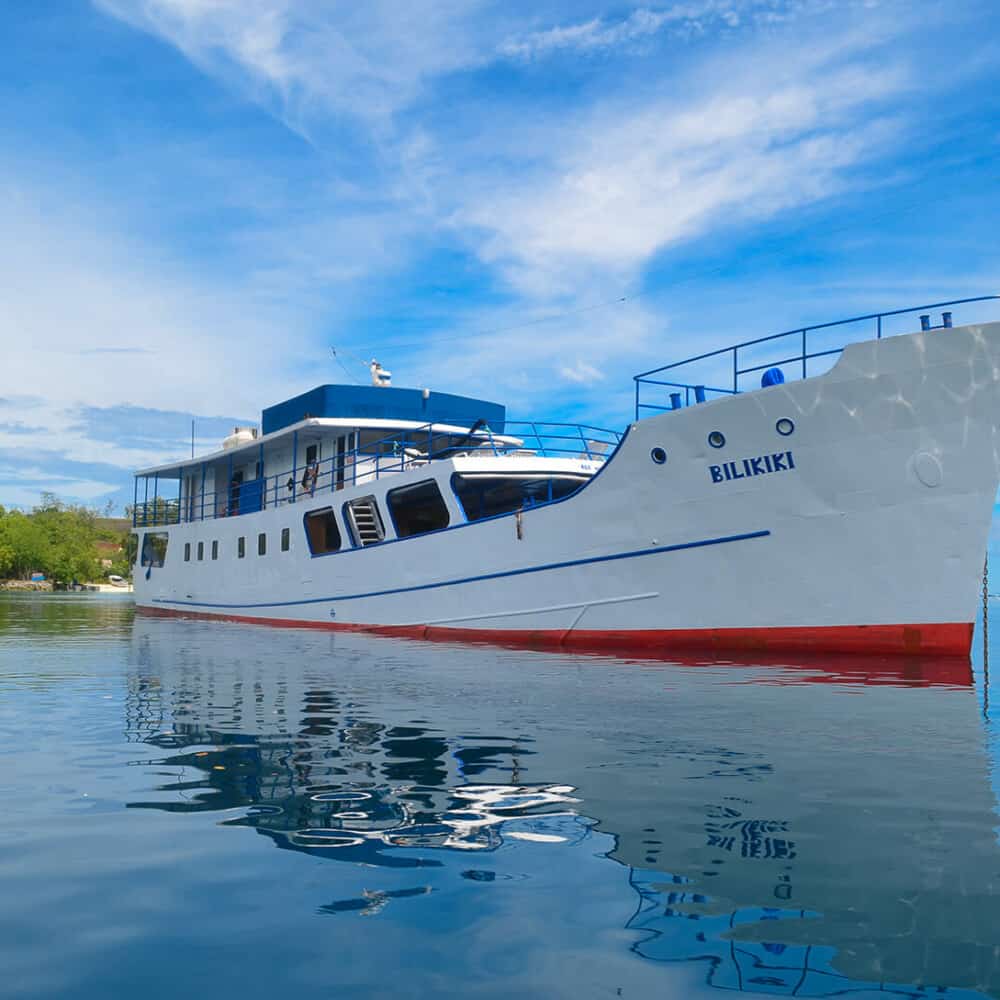
MV Bilikiki
In 1989 MV Bilikiki sailed as the first full service liveaboard dive vessel in the Solomon Islands. She is a large, stable, comfortable vessel and consistently rated one of the best liveaboard ships in the world. MV Bilikiki has 10 deluxe cabins, eight…
Naturalist(s)
Your expedition will be led by one or more of the following expert naturalist guides:
Trip Extensions
Pre or post trip extensions in Fiji to snorkel in Beqa or off-the-beaten-track culture experience in Nadi are available, please contact our travel team for more information.

